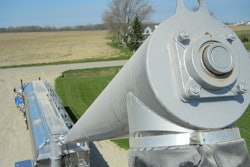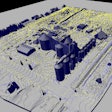As the ubiquity of facility automation spreads throughout the feed and grain industry, users are beginning to look for benefits beyond simply running their equipment electronically. Removing facility operations from manual control is still an undeniable advantage to automation systems, but there is also value in their often overlooked secondary function: nearly constant data collection.
“Data collection is showing to be of increased importance to today’s feed and grain facilities,” remarks Josh Coder of Control Stuff, Inc., an automation systems integrator from Cologne, MN. “As the technologies and tools for data collection and analysis become more cost effective, and with shorter payback periods, there has been a surge in requests for collection and analysis of data related to the various processes.”
Automation systems can monitor and log everything from electrical demand to inventory levels to equipment run time and parts temperatures, and sophisticated reporting tools available with many of today’s options can be used to streamline operations and make better management decisions.
The mechanics
In order to understand how facility data is collected and how it can be analyzed, it’s important to identify the components of an automation system, and how they communicate with one another. Coder outlines the basic components as follows:
HMI – Human Machine Interface
- This is the user’s connection with the automation system, which allows for control and monitoring capabilities. HMIs come in many forms, from panel boards with switches and lights to desktop computers.
PLC – Programmable Logic Controller.
- This is the “brain” of an automation system. The PLC processes real world information to make logical and timely decisions, on the basic principle of “if/then.” Aside from this basic processing, PLCs are capable of monitoring, recording, alarming and more.
I/O – Inputs and Outputs
- Discrete Inputs – This is information collected from devices like limit switches, plug switches, hand-off-auto switches and other real-world equipment that return a signal that is either on or off.
- Analog Inputs – This is information from devices like CTs, level sensors, flow meters and other field devices that return a signal that is variable.
- Discrete Outputs – These are what the PLC uses to control devices like relays, motor starters, solenoids, actuators and other field devices that require an “on” or “off” state to function. Generally, when a discrete output is “on,” the field device is operating and when the discrete output is “off,” the field device is not operating.
- Analog Outputs – These are what the PLC uses to control devices that require a variable signal to operate. Rather than the “on/off” state of a discrete output, the device requires a signal of varying voltage or current. Field devices such as internal screener gates, turnheads and Variable Frequency Drive (VFD) speed control often call for analog outputs.
- Communication Cards – These are not technically inputs or outputs, but are used to “talk” to other devices such as computers, smart sensors, scale systems, hazmon systems and other devices that are not capable of i/o connection.
Data-based managing
Once the various inputs, outputs and control devices are integrated and begin collecting data, how can management use it to improve facility operations? Alan Berndston, director of sales for New Berlin, WI-based WEM Automation, Inc., has one example.
“In the past, most users’ data needs were based around inventory, quality, and production totals,” begins Berndston. “These are all still very important, but feed mills are also demanding true mill performance data. So, Key Performance Indicators have become an essential element of our reports. Mill managers need to know the average time it takes to unload a truck, how many times an ingredient bin has jogged, how many batches per hour are produced, the number of trucks loaded, etc. These graphic reports establish performance goals that can be measured and reported instantly by date, shift, or formulation”
Heath Roker, project manager / sales engineer of Salina, KS-based Kasa Industrial Controls, Inc., explains another way to use data to track performance.
“Look for utilization patterns to measure how efficiently the equipment is being used,” Roker begins. “In a grain facility, a leg or a bucket elevator is a critical component in moving the grain, and you need it to run at optimal operating efficacy. You can determine if a leg is meeting that level, running below efficacy, or being over-driven by collecting the averages of the flow of grain on the legs and how full the buckets are.”
Roker notes that operators at non-automated facilities may run equipment up to 30% less efficiently than the equipment’s potential, so as to avoid plugging the leg, which results in longer lines at the dump pit and an overall less efficient facility.
Doug Forst, president of CMC Industrial Electronics, a HazMon provider based in Burnaby, B.C., Canada, says that’s part of the appeal of facility automation — to remove human decision making from the equation all together.
“One of our largest customers has as internal mandate for all of their conveying equipment — bucket elevators, conveyors and drag conveyors — to have engineering controls added by the end of 2015.” Forst says. “That means if there is an out-of-safe parameter on the machine, it will automatically stop. The alternative method requires people to manually touch the bearings or use a thermal gun to get a heat reading, but this company wants the entire process 100% monitored in real time, tied back to a control system that will stop those machines automatically.”
Forst also advises using temperature monitoring reports as part of a preventive maintenance program. The data could reveal, for example, an over-lubricated bearing.
“The goal is to have the right amount of lubrication on your bearings. If you over-lubricate a bearing, it will run hot because it has to push the grease around, which can damage it and could potentially could lead to a shutdown on that piece of equipment.”
Integrating the facets of a feed and grain facility, such as scales, motor control equipment, level sensing devices, critical safety devices, hazard monitoring equipment and grain temperature monitoring equipment, allows automation system users to remove human decision making from their basic operations, to meet equipment and operations performance goals, and can assist in preventive facility maintenance.


















